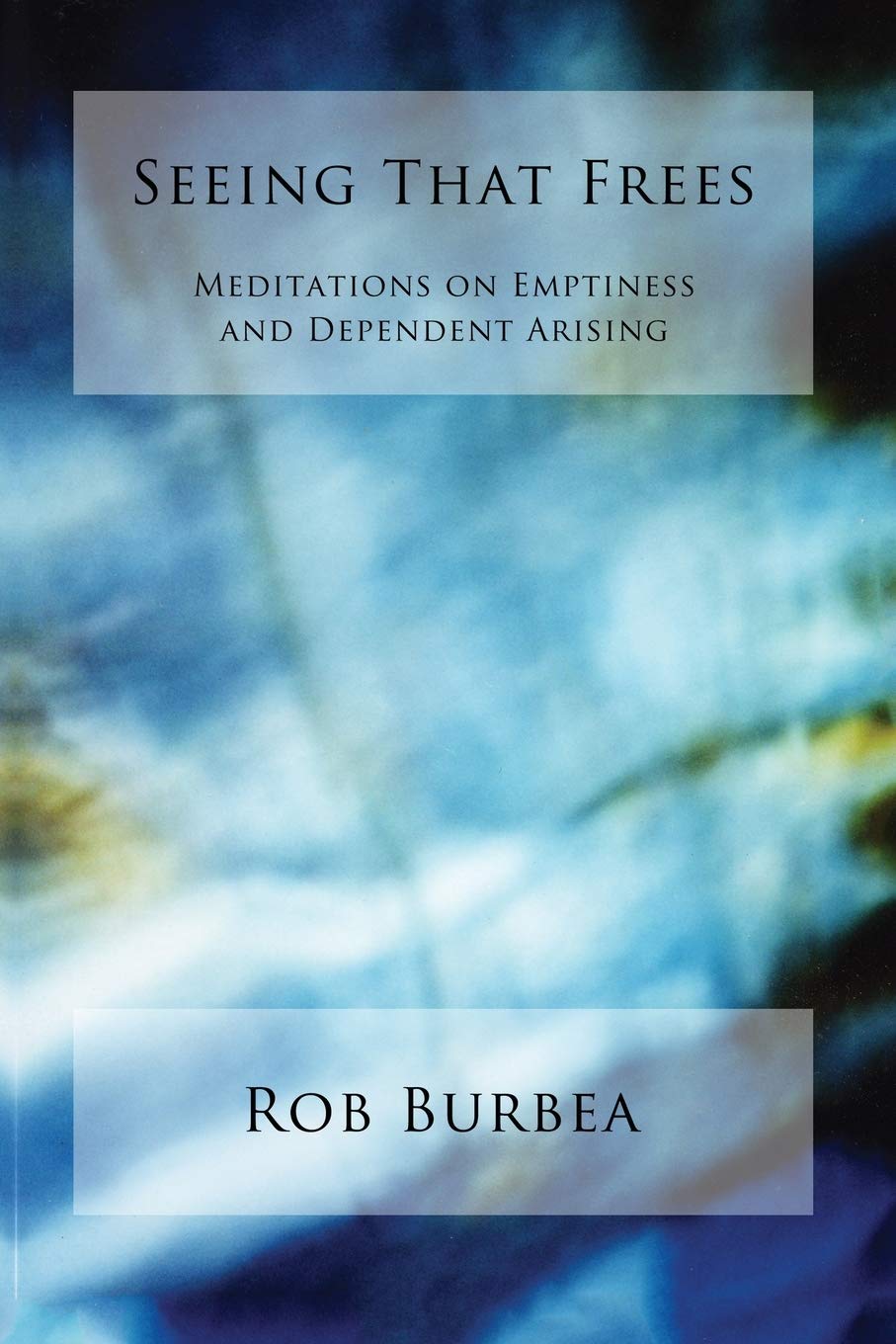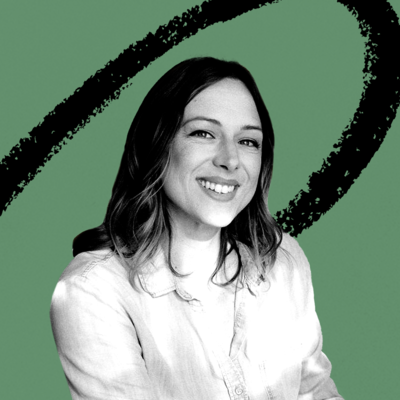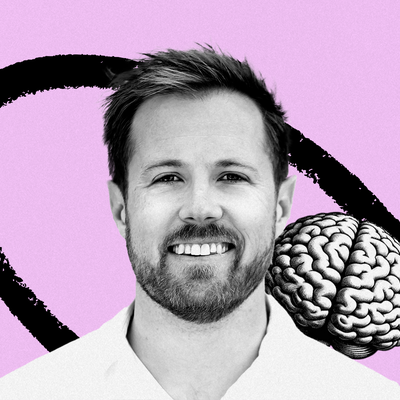
Sponsored By: On Deck Angels
Emulate the best angel investors in the world and take your investing to the next level by joining On Deck Angels (ODA) today.
Seeing that Frees is a dense 464 page guidebook and training manual for your conscious experience.
It is incredibly precise, detailed, original and filled with practical examples to follow the trails that its author, Rob Burbea, has followed into the depths of his mind. I’m only about a quarter of the way through, but there’s enough in the first hundred pages that I think I could spend the next 10 years living with it and still feel like I have more to learn from it.
The basic idea of Seeing that Frees is that there are different ways of “seeing” yourself and the world, that some of those contribute to pain and some to growth and freedom. Its aim is to show us how we can learn through practice, play, and experimentation to free ourselves of the ways of seeing that create more pain, and learn to use more of the ones that are helpful for growth.
If you’re at all interested in learning about what is underneath productivity—how your own mind works and how that ladders up into your experience of, and effectiveness in the world—this is a seminal book.
. . .
Most serious books about meditation are pretty dogmatic and tradition-oriented. They start out with positing a kind-of-crazy-sounding series of propositions: life is suffering, suffering comes from delusion, if you meditate enough you’ll realize your delusions, you’ll stop craving things, and then you’ll stop suffering! These books make big promises about the nature of reality and what you can accomplish if you just sit in a room and look at your breathing for a while.
But it also often sounds…I don’t know, unappealing? Not very believable? It turns a lot of people off.
I think I know why they do this: it’s basically good copywriting! Don’t bury the lede! Make your big claim up front! Life is suffering!
If you do things this way you have the advantage of converting lots of people who are suffering a lot and are really motivated to change that, which is a win. But you might miss all sorts of other people who might benefit from learning about the things you have to say but aren’t ready to accept the big metaphysical claims that your techniques seem to rely on.
Here are some highlights from the On Deck Angels (ODA) community:
- In 14 months, ODA members have launched over 80 funds and syndicates.
- ODA has facilitated over 400 intros between angels and founders from breakthrough startups.
- ODA has members in 24 countries – from Silicon Valley to India to the Philippines.
In response to this are all sorts of other meditation books that are designed to hook you with tangible benefits like reducing your stress levels and increasing your focus without strapping you into an entire philosophical outlook and religious tradition that might turn you off. These are also very useful gateways for people, but by design they suffer from a lack of depth, originality, and power.
It’s very rare to find a book about meditation and Buddhism that retains the lack of dogma, pragmatic, playful and results driven attitude that are common to the second type of book, while combining the depth, wisdom, and seriousness of the first.
Seeing that Frees by Rob Burbea is that rare kind of book.
The really, really nice thing about this book is that it isn’t tied to any one particular insight or any particular level of explanation. It operates with expert skill on the level of everyday psychology and also on the deepest levels of meditation experience.
Most meditation books, for example, focus on the idea of “being with what is”. But from Burbea’s perspective, that too is just a way of looking. Sometimes it’s helpful, and sometimes it’s not. And it’s important to know when and how to deploy it.
“Actively cultivating a range of skillful ways of looking, is premised, then, on the understanding that we are always and inevitably engaged in some way of looking at or relating to experience anyway. But we are not usually aware of this fact. Nor are we usually aware of how we are looking—what exactly the view is—at any time.”
. . .
The core thing you probably should know about the book is this: it’s basically a collection of ways to get insight.
Insight is defined as any realization, understanding, or way of seeing things that brings about a decrease in your own suffering. (Decreases in suffering lead to more freedom which gives you more ability to act in the world in ways that are most effective.)
This is great, because we all deal with problems in our day to day lives and it means this book is a compendium of lots of great ways to solve those problems. It’s filled with various places you can intervene in your own system of consciousness to root out problems and untie knots and weird feedback loops of suffering so that you can realize a sense of freedom that might be lacking.
So what are these insights you ask?
Insights can be an experience of something: an aha moment of realization about yourself or about someone else. Or they can be a way of looking at the world that generates a lessening of suffering. It’s basically the equivalent of mental models for your own consciousness.
The insights apply in ways that are very practical: for example, giving a presentation at work that you’re nervous about. In Burbea’s world a mundane example like that turns into a spectacular 20 page moment by moment analysis of how your sense of dread about the presentation you're about to give is created by past experiences, and how your mind tends to focus on it, stoke it, and create more of it in various feedback loops that keep you trapped. Once he’s done painting a picture of your mind that is both as detailed and precise as anything you’ve ever read, he then unpacks in great detail how to unknot yourself. He goes through various different places to intervene in the loops that keep us trapped, and he does so at every level of experience from the level of ordinary psychology, all the way down to the level of basic awareness of metaphysical reality.
Choose your poison, whatever helps. If you want a book to help you expand your explanation space for problems in your life and introduce novel solutions…then this is it.
. . .
The next thing you should know about this book is that, in Rob’s view, the biggest kind of freeing insight, and the most interesting way of looking, is emptiness.
Emptiness is kinda hard to understand, and is probably best left to experience, but Rob tries various ways to point in the right direction so you get the gist:
“Emptiness is the absence of this inherent existence that things appear to naturally and undeniably have.”
Okay…so emptiness means that things are not really as they seem. Basically, if you sit in a room long enough and do nothing but focus on your breathing or some other object of attention you’re going to see some wild stuff as different parts of your brain turn on and off. In particular, you’ll find that some of the conceptual apparatus that holds the world together—thoughts, ideas, emotions, memories, facts—drop away.
What’s left is a visceral understanding of the ways in which your mind manufactures, or in Rob’s parlance “fabricates”, your experience. It’s very tough to see how your mind creates the world, and it requires a lot of sitting and focusing on your breathing, but every once in a while you can get a little opening—a little peak at it—and that peak has lots of interesting potential consequences for creating more freedom.
Burbea writes:
“Imagine that you enter a room that is dark except for a lamp in one corner. There you see your friend, huddled next to the lamp in a state of great anxiety and staring transfixed at the wall opposite. “A wolf! A wolf!”, he is whimpering in fear. Turning to look at the wall, you see a large silhouette of a wolf but very quickly realize that it is just the shadow of your friend’s hands, cast by the lamplight on the wall. In his fear he is completely unaware of his hands or how he is holding them, or the fact that the wolf shape is merely their shadow. What will you say to him?”
Seeing that Frees is Burbea’s attempt to show us that we are the friend who is afraid of the wolf, and exploring emptiness is the way he wants to show it.
The reason emptiness is an interesting way to decrease suffering and increase freedom is if you can learn to see the ways in which you are creating the things you most fear—that you are holding your hands up to create the silhouette of the wolf—you might be able to create less of the wolf.
Every time you get a glimpse of emptiness in something that you are afraid of, it helps to unhook you from your fear—which opens up a much larger range of potential options for dealing with that thing that you are afraid of. A realization of emptiness also allows us to create more of the stuff we do like: if you realize that your mind is creating your experience, then you are able to frequently tip the scales of your mind to have more of the kinds of experiences that you want.
. . .
Okay, so how do we do this?
Two ways: meditation, and logical analysis that reflects on your experience.
Perhaps it is unsurprising that Burbea thinks that meditation is very helpful for getting insights in general, and insights of emptiness in particular. But it's interesting to hear his ideas about how it works.
Rob explains that deep meditation cultivates samadhi, which is a Sanskrit word that is usually translated to mean ‘concentration.’ Basically you can get to a point in your meditation practice where you regularly experience, “Some degree of collectedness and unification of mind and body in a sense of well-being.”
You can get this sense of unification in lots of ways—paying attention to your breath, reciting a mantra, etc.—and it can arise through a narrowly focused attention or one where awareness is deliberately kept more open.
Why does Burbea think samadhi is helpful for generating insight? He has a few reasons:
- If you have a really steady attention and concentration it’s helpful for looking deeply at situations and experiences—which helps create insight
- If you’re in samadhi you’re a lot calmer, which leaves your mind more malleable and able to look at things in different ways
- The experience of samadhi gives you a general sense of well-being that you feel you can access regularly, which helps you let go of things that otherwise might be scary to let go of
Basically, if you can regularly get to a state where you can flexibly, and calmly look at yourself and the world without getting stuck—it increases your confidence going into tough experiences, and is subsequently really helpful for generating better understanding of and responses to those situations.
“Meditation thus becomes a journey of experimenting: with freeing ways of looking; and in particular with ways of looking that withdraw, undermine, or dissolve various elements in the mind and heart that contribute to [suffering].”
. . .
In writing this I’m feeling my metaphysical hackles go up. Yes, yes, things are not as they seem, and everything is an illusion, but try telling that to me when my co-founder is yelling at me and I can’t raise any money and I need to pay my mortgage.
Edward Abbey wrote the obvious philosophical objection to Burbea’s work eloquently: “To refute the solipsist or the metaphysical idealist all that you have to do is take him out and throw a rock at his head: if he ducks he’s a liar. His logic may be airtight but his argument, far from revealing the delusions of living experience, only exposes the limitations of logic.”
I think that’s a fair critique of the underlying metaphysical points of the book, but I don’t think Burbea cares that much. In response to Edward Abbey I’d imagine him saying something like:
“Let’s just consider cases where having this experience of emptiness might be helpful. If they are, it might be powerful to learn how to use them. Perhaps, they wouldn’t be helpful in a situation where someone is throwing a rock at your head—but maybe they would be in another.”
The nice thing about this book is that Burbea doesn’t beat you over the head with trying to solve all of your problems and at the level of metaphysical emptiness. In fact, he argues that doing this is not always helpful.
“A part of freedom that comes with any degree of realizing emptiness is a freedom to view in different ways. And in fact there will be countless times when it is not only necessary, but most helpful, not to emphasize the view of emptiness. Sometimes seeing in terms of self is the most appropriate way of seeing, and the one that relieves the [suffering in] a particular situation most satisfactorily.”
For Burbea, it’s most important to learn at what level it is appropriate to intervene and to do so at that level.
Burbea clearly believes in the ultimate metaphysical ideas that his experience has pointed to. But he’s very willing to let you start on the path yourself, and find the ways in which it is helpful—or not—to go deeper.
The depths are available, but only if you want them.
I, for one, am interested.
Thanks for reading! I really tried to aim this review at people who might be somewhat curious about meditation but aren't certified mindfulness geeks. As such, I skipped a lot of the technical terminology and more esoteric topics that are present in great volume in this book.
That's not because they're not important! I'll probably cover them in more depth at some point, it just didn't seem like the right place to start. If I have violated some sacred cow in doing this, I apologize!
Find Out What
Comes Next in Tech.
Start your free trial.
New ideas to help you build the future—in your inbox, every day. Trusted by over 75,000 readers.
SubscribeAlready have an account? Sign in
What's included?
-
Unlimited access to our daily essays by Dan Shipper, Evan Armstrong, and a roster of the best tech writers on the internet
-
Full access to an archive of hundreds of in-depth articles
-
-
Priority access and subscriber-only discounts to courses, events, and more
-
Ad-free experience
-
Access to our Discord community
Thanks to our Sponsor: On Deck Angels
On Deck Angels (ODA) provides community, education, and deal flow for operator angels – with tactical workshops, fireside sessions with investing legends & rising stars, live pitches, diligence sessions, and much more.





Comments
Don't have an account? Sign up!